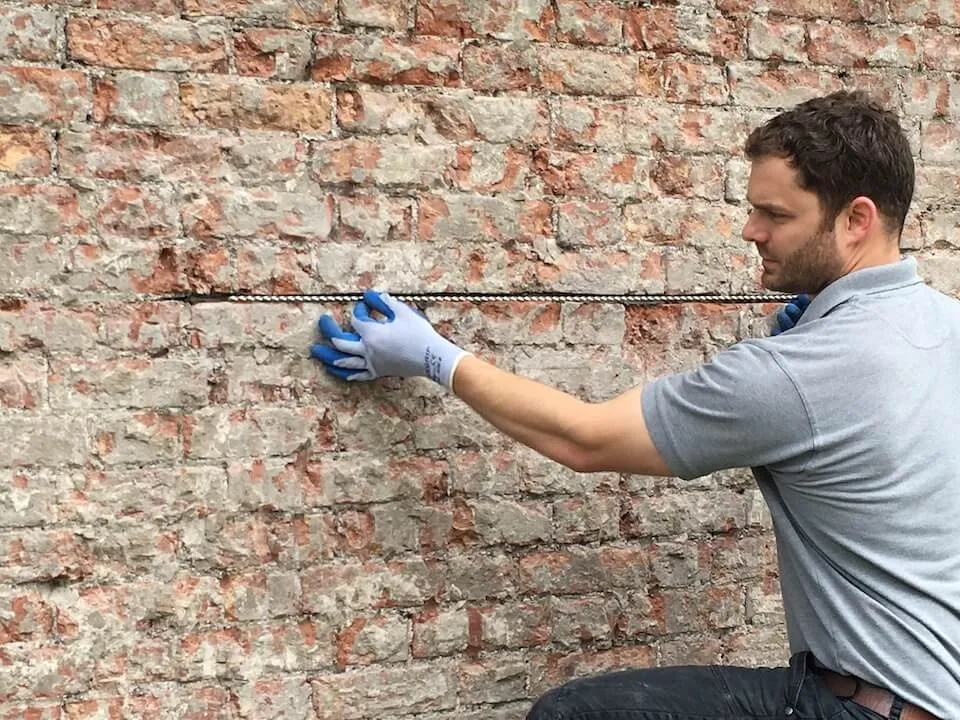Cracks in the walls of your home can be unnerving. Should you worry about them? After all, they aren’t just unsightly – they can be a sign that something more serious is wrong. However, not all wall cracks need the attention of a structural engineer. Some cracks can be quite common, especially in new homes, long walls or shortly after a drywall installation. Let’s go through the tips and tricks you’ll need to determine if it’s just a cosmetic wall crack – where some simple remodelling will solve the problem – or if it’s a sign that something major has happened to the structural integrity of your home.
Settlement
When homeowners see cracks in plaster the first thing they often think of is “foundation”. This is not always the source of the crack! Most cracks in plaster walls have nothing to do with the foundation; rather they are caused by the house “settling” and the expansion and contraction of the wood that goes on due to humidity changes. Such cracks are usually not a major problem unless one is concerned from an appearance viewpoint. These sorts of cracks can be patched without fixing the major issue, which would be the “settling” of the home.
To understand what the symptoms of your plaster trouble should be called let’s first discuss the types of plaster wall cracks you might see in your home.
Different Types of Cracking in Walls
The size of the cracks that you can see will vary quite a lot in severity, as will their appearance and position on the wall or ceiling. On the whole, it is impossible to be sure about the precise cause of any kind of cracking without a professional opinion, but you can find (often approximate) classifications, according to the online survey. A crack in the stucco of your beloved home can be quite annoying. So, getting to know the different types of cracks will help. Cracks differ in terms of their size, appearance, location and severity. Here is the relevant information about different types of Wall Cracks and what they can be indicating about your house.
Hairline Cracks
Hairline cracks are small shallow cracks that appear in the coat of render; they usually occur due to natural ageing of building materials or minor settlement. These cracks cause a linear line to appear on the surface. This form of crack is often nothing to worry about and is usually only a cosmetic type of crack. Hairline cracks can occur with temperature fluctuation humidity levels or minor movement within the foundation of the house years after completion. If left can be a cause for concern as hairline cracks are usually the first warning that a defect may develop into a more serious problem.
Vertical Cracks
Vertical cracks that appear on a foundation wall that run vertically, top to bottom usually run in a straight line. These types of cracks are usually the result of one of two situations: shrinkage of the concrete foundation over time or deterioration of the concrete foundation due to environmental conditions. Vertical cracks are of least concern and are commonly seen in almost all houses.
Horizontal Cracks
These types of cracks span the length of a wall horizontally and are serious and could point to a foundation problem. Horizontal cracks can be the result of soil pressure on the exterior of the wall, deep frost lines, extremely hard soils, or water pressure, for example, from a rising water table, on the other side of the wall. Horizontal cracks let in more water than the above cracks. Horizontal cracks are the most dangerous.
Stair-Stepped Cracking
The crack is more severe than just a cosmetic problem; stair-step cracks can mean that you have a heaving foundation. Whereas, a hair-line crack doesn’t pose this danger. As the soil under a pier and beam house shifts, it will lead to separation in the brick-and-mortar wall stack. Check your cracks to find out what type you have. Look for cracks that are not the width of your pinky, but run in an “downstep” sort of pattern.
It is advised to consult a home surveyor when you are thinking of buying a new home. Even a small crack in your home could be a major problem in the future. It is always important to contact a professional to ensure the integrity of your home. You need to be aware of what damage may be caused and what you need to look out for in your home. Please note that only a home surveyor can truly tell you what to expect. Cracks in your home shouldn’t be ignored, even the hairline ones. As a believed professional in the field, even I go against my word and state that the smallest of cracks, despite the geography, should be looked at by a home surveyor. What risks might there be to my property, and when do I need a home survey visit?
Foundation Cracks
Foundation cracks can be a sign of foundation problems or changes in the structure and stability of the building. Cracks form out of nowhere or deteriorate speedily over a brief period. You simply just don’t know the reason or the severity of the cracks. Let a qualified home surveyor carry out a full and thorough inspection of your property to determine the issues that are causing your wall to crack, and recommend any necessary precautions that may be required should your property have any structural issues. Early detection can substantially reduce the risk to your property, often the costs involved can also be far less. You never know what hidden problems homes have until you live in them for many years.
Assessing the Severity of Wall Cracks
The surveyors are highly trained and experienced when it comes to spotting the signs of issues far deeper than what the naked eye can see. They can assess and understand structural damage and be able to say how much it would roughly cost to repair if required. When assessing the severity, surveyors look at:
Crack width: a surveyor measures the slight differences in widths that each crack has. Small, narrow cracks shouldn’t be of concern whereas larger, wider spread cracks should be.
Location: a surveyor looks at where in your home the cracks are. Cracks around doors, windows, or load-bearing walls can be notable sights to see.
Movement: signs of foundation movement, such as uneven floors, sticking doors or windows, or gaps between walls and ceilings.
Impact of Cracking Damage in London Wimbledon Property
Not all wall cracks are an indicator that your house is going to fall around you. Knowing what type of wall cracks you have, and how they have formed it is very important in identifying whether the wall crack is in itself a major structural issue or merely a surface cracking cosmetic issue. Knowing how to identify the warning signs of a serious wall crack is important and just because a wall crack is present it does not necessarily mean that it is going to collapse around you. The simple rule is to understand that if you are not sure about your wall cracks, ask an expert.
If you require any further information or would like to book a home survey with the team, please feel free to contact us.
















